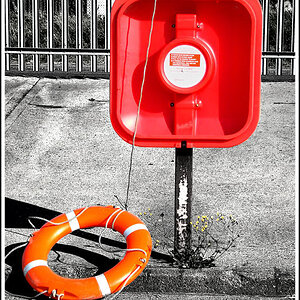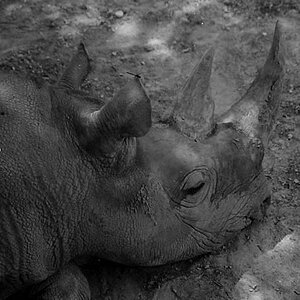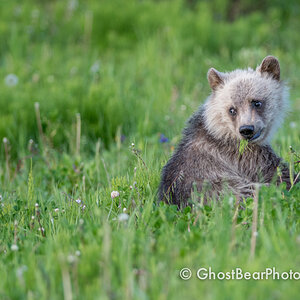AmberAtLoveAndInk
No longer a newbie, moving up!
- Joined
- Dec 15, 2013
- Messages
- 371
- Reaction score
- 98
- Location
- Carol Stream, IL
- Website
- www.loveandinkphotography.com
- Can others edit my Photos
- Photos NOT OK to edit
Howdy there folks! I have been asked to give a little lecture to the AV students about how to take better photographs at my old high school in about 3 weeks. I have finished up what I think is a great slideshow but I wanted a few opinions on what I will be actually "teaching". You see, I'm not diving into the exposure triangle or any of the really complicated stuff since the AV department is a low budget area and I know for a fact they do not use heavy handed SLR's and even if they did, teaching a whole room of kids to shoot in manual AND how to take a decent picture while doing so just won't fit into our 44min time slot.
So I have decided to come at this from a creative direction, teach them a few things that can be useful with any kind of camera, even their phones.
Here are the range of topics I'm covering:
The 3 Key Elements to a "Good Picture"
- Subject Matter
- P.O.I. (Points of Interest)
- Emotion
Technical Aspects of Light
-Golden Hours
-Shooting in Direct Sunlight
-Manipulating the Light Around you
I wanted to teach them how to make their intended subject stand out to the audience using clean backgrounds, rule of thirds, framing and general posing.
Points of interest was something I came up with that I feel is important in any image, the slogan is "Don't just take a "good picture", take an interesting one!" So I'll be showing them how to add points of interest that draw the viewer to their photos with small props or using the outdoor elements for backgrounds, as well as capturing their subjects doing interesting things.
Emotion is an obvious statement, I'll talk briefly about how important it is to capture an emotion rather than to create a fake posed smile (since someone staring at your camera with a stiff lip only has one emotion to me, boring!) I'll also touch down on how emotion doesn't have to come from your subject, that creating an image that sparks an emotion in your viewers can be just as great.
The aspects of light will be briefly discussed. I'll tell them when the best times to shoot are and why they are the best times. I will show them ways to work with the 2pm blaring sun using shaded areas, reflectors, and flash for fill light. I will also talk about the use of indoor flash (very very briefly) and how to bounce a flash. I'll also talk about the different kinds of lights and how all light is not created equal (color in light, strength of light, tungsten, florescent, natural)
I have timed out my presentation to last about 35 min, allowing 2 min to do a small intro in the beginning "Hey guys, how ya doin'! Here's what I'm talking about today!" and 7min at the end for Q&A.
Do you think this is a bit basic for high school students? I don't want to bore them, but I also don't want to lose them in the jumble of complicated tech-talk.
So I have decided to come at this from a creative direction, teach them a few things that can be useful with any kind of camera, even their phones.
Here are the range of topics I'm covering:
The 3 Key Elements to a "Good Picture"
- Subject Matter
- P.O.I. (Points of Interest)
- Emotion
Technical Aspects of Light
-Golden Hours
-Shooting in Direct Sunlight
-Manipulating the Light Around you
I wanted to teach them how to make their intended subject stand out to the audience using clean backgrounds, rule of thirds, framing and general posing.
Points of interest was something I came up with that I feel is important in any image, the slogan is "Don't just take a "good picture", take an interesting one!" So I'll be showing them how to add points of interest that draw the viewer to their photos with small props or using the outdoor elements for backgrounds, as well as capturing their subjects doing interesting things.
Emotion is an obvious statement, I'll talk briefly about how important it is to capture an emotion rather than to create a fake posed smile (since someone staring at your camera with a stiff lip only has one emotion to me, boring!) I'll also touch down on how emotion doesn't have to come from your subject, that creating an image that sparks an emotion in your viewers can be just as great.
The aspects of light will be briefly discussed. I'll tell them when the best times to shoot are and why they are the best times. I will show them ways to work with the 2pm blaring sun using shaded areas, reflectors, and flash for fill light. I will also talk about the use of indoor flash (very very briefly) and how to bounce a flash. I'll also talk about the different kinds of lights and how all light is not created equal (color in light, strength of light, tungsten, florescent, natural)
I have timed out my presentation to last about 35 min, allowing 2 min to do a small intro in the beginning "Hey guys, how ya doin'! Here's what I'm talking about today!" and 7min at the end for Q&A.
Do you think this is a bit basic for high school students? I don't want to bore them, but I also don't want to lose them in the jumble of complicated tech-talk.


![[No title]](/data/xfmg/thumbnail/39/39472-acea19526f2c08f92fd1e95a92191bc2.jpg?1619739043)










